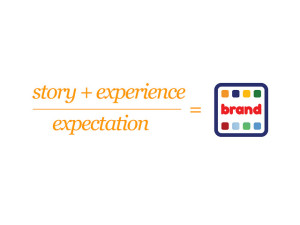— October 6, 2018
Customers are busier than ever — in fact, more than 60 percent of people work at least 40 hours a week on top of countless hours of housework. Even with this full plate, they still must make well-informed buying decisions and find ways to familiarize themselves with brands.
As a result, your organization should provide personalized customer online training resources that audiences can peruse at their own pace. With eLearning course development, you can tailor your brand to tech-savvy customers instead of relying on traditional strategies that feel more intrusive.
What to Consider as You Approach eLearning Development
Developing effective online learning courses isn’t easy — especially when you’re just starting out. It’s important to consider a few circumstances before implementing an online training course.
First, you must consider the cost of customized in-house content versus outsourcing to a vendor or using templated online training courses. Choose the option that works best for your needs, and have a firm grasp on your target market and product as you begin eLearning course development. It’s more than identifying consumer buying behaviors and product specs — you must also identify how your brand stands out, which pain points it addresses, and which gap it fills in the market.
Second, you must remember that online training won’t always result in a direct sale. An online customer education course should impart skills that empower online learners to overcome obstacles. While your company’s product or service should make this obstacle more surmountable, you are offering this course because you want to establish trust.
Lastly, your team must be prepared to provide superior service or risk losing out on any customers you do gain from your online courses. An established online training program can equip your employees with the skills and knowledge they need to succeed.
How to Create Effective Online Courses
The best eLearning courses are flexible, convenient, and accessible. Once you have covered those bases, consider the following tips to ensure your online course is valuable for everyone involved:
1. Define measurable goals based on business and customer objectives.
Establish clear goals (that you can measure), and conduct online surveys and focus groups to research customer expectations. If you want to build brand loyalty and consumer confidence by launching a product knowledge course, you must determine what customers know — and don’t know — about your product.
Once you have that information, you can set realistic sales targets and measurable goals that focus on customer satisfaction scores and repeat business. These goals, objectives, and outcomes will serve as a basis for your entire eLearning course development and online curriculum.
2. Invest in an extended enterprise LMS.
Using an extended enterprise LMS for customer training will help you develop and deploy your online training course while tracking learner engagement. With an LMS, you can launch customized online courses that users can access from any device. You can also assign specific resources to certain demographics or customer groups based on their buying habits and product needs. It’s also wise to invest in a rapid eLearning authoring tool that features built-in assets to maximize resource allocation.
3. Incorporate microlearning resources for supplemental online training.
A one-off online training course can give learners the information they need to make an educated buying decision. However, microlearning online training resources offer on-demand support after the fact. Customers can use these bite-sized activities to refresh their memories and learn more about add-ons, services, and tie-in products that address their needs.
You can even incorporate microlearning online training resources as you create online courses that cater to different learning preferences. While some online learners might prefer to listen to podcasts regarding your new app, others can explore the app’s features and test out the interface via gamified training.
4. Integrate game mechanics to motivate and inspire customers.
Gamification involves game-based rewards and mechanics, such as levels or badges that serve as an added incentive. Companies have been using gamified customer loyalty programs for years, and you can integrate it into your learning objectives to motivate and inspire online learners.
Customers earn points for every online training module they complete, making them more likely to engage and participate. This leads to better brand loyalty, and it ensures they know as much as possible about your products and services. The key is to choose the right rewards to reinforce behaviors while aligning with learners’ personality traits and preferences.
5. Host live events to interact and engage.
Online learners go at their own pace, but they still enjoy the opportunity to interact with your brand and fellow customers. Host live events, launch a social media training group, and encourage interaction through blogs and forums. You can even host online workshops or Q&As so online learners can see the human side of your brand and feel like a part of your virtual community.
That said, some online learners might not have the time or inclination to attend live events. Make sure they can still access this information through online courses or view recorded events to get up to speed without the need to rearrange their schedules.
It could be challenging to win over upper management and other key stakeholders, as eLearning development is an investment. However, you can make the case that online customer training increases sales and satisfaction while making your brand more accessible. You might even reach untapped markets thanks to your tech-centered online training strategy that breaks down geographical and demographical barriers.
Business & Finance Articles on Business 2 Community
(35)





